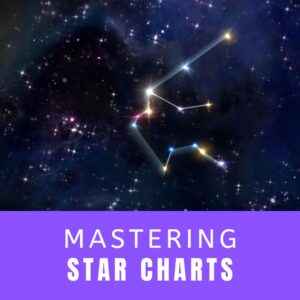This site contains affiliate links to products. I may receive a commission for purchases made through these links.
Choosing the right telescope can be a daunting task, especially when you’re stuck between a Dobsonian and a Refractor. I’ve been there, and I’m here to share my insights.
Dobsonian telescopes, named after their inventor John Dobson, are popular for their large aperture sizes and affordability. They’re great for deep-sky viewing, offering bright and detailed images.
On the other hand, Refractor telescopes use lenses to gather and focus light, providing high-contrast images. They’re excellent for observing the moon, planets, and double stars. But which one’s the right fit for you? Let’s dive in and find out.
Pros and Cons of Dobsonian Telescopes
Getting into astronomy can be a daunting task but having the right equipment is crucial. I’ve spent countless nights stargazing and trust me, the type of telescope you use can make a significant difference. With this in mind, Dobsonian telescopes certainly have their merits and some drawbacks too. So, let’s delve deeper and explore both sides of the spectrum.
Pros of Dobsonian Telescopes
Large Aperture Sizes: Dobsonians are renowned for having large apertures which allow more light to be gathered, resulting in brighter and clearer images of far-off celestial bodies. This feature makes Dobsonian telescopes an excellent choice for deep-sky viewing.
Affordability: In comparison with other telescopes, Dobsonians are on the affordable side for the aperture size you get. This affordability is a boon for beginners and those on a budget.
Ease of Use: These telescopes are user-friendly with their uncomplicated, straightforward design. Their altazimuth mounts make them easy to point and track celestial objects.
Cons of Dobsonian Telescopes
Size and Portability: The same feature that’s a boon can also be a disadvantage—size. Dobsonian telescopes’ large apertures mean bigger and heavier instruments. This bulk makes them less portable and can be a hindrance if you need to relocate your viewing point often.
Not Ideal for Planetary Viewing: While Dobsonians are great for gazing at distant nebulas and galaxies, they’re not as effective for close-up, planetary viewing. If you’re keen on observing the Moon’s craters or Jupiter’s bands in detail, a refractor may be a better choice.
Maintenance: It’s not a major drawback, but Dobsonian telescopes require regular collimation, which is the alignment of their optics. This necessity can seem a tad daunting to novices.
Pros and Cons of Refractor Telescopes
No matter the hobby, it’s always crucial to weigh the upsides and the downsides to any investment. So let’s take a moment to dive into the advantages and disadvantages of refractor telescopes.
The Pros
One of the key benefits of refractor telescopes is their optical excellence. They’re generally superior with respect to contrast and resolution due to their unobstructed, closed-tube design that helps to maintain stable and high-quality images.
Durability is another selling point for refractors. With fewer movable parts and a sealed tube to protect against dust and moisture, a well-built refractor telescope can last you a lifetime.
Moreover, refractors are known for their ease of use, making them a favourite among beginners or those looking for a grab-and-go scope. Simply point it at the sky, and you’re stargazing.
The Cons
In all fairness, refractor scopes aren’t without their downsides. The first hurdle for many is the price tag. With higher optical quality comes a steeper cost compared to their Dobsonian counterparts.
Next, there’s the issue of size and weight. Due to the manufacturing process of the lens, larger refractors can become very large and heavy. This might make transporting the scope a real workout.
Lastly, refractor scopes often suffer from a phenomenon called chromatic aberration. This optical defect becomes noticeable as coloured fringes around bright objects and can mar the viewing experience.
In the grand scheme of things, these pros and cons merely scratch the surface. A deeper understanding of the ins and outs of both refractor and Dobsonian telescopes can give you the clarity needed to make a well-informed decision. That said, it’s always a good idea to try before you buy, and join a local astronomy club if you can, to get a real feel for both types of telescopes.
Aperture and Light Gathering Power
The aperture, or diameter, of your telescope has a significant impact on what you’re able to observe from the cosmos. In layman’s terms, the larger the aperture, the more light the telescope can gather. More light means more detail, enabling you to see fainter objects with better clarity.
In the battle between Dobsonian and Refractor telescopes, there’s a difference when it comes to aperture size. While refractor telescopes often operate well with smaller apertures, Dobsonian telescopes capitalize on their larger apertures. Let’s delve into this fascinating feature further.
Dobsonian Telescopes and Aperture
Dobsonian telescopes, fondly referred to as “light buckets” by some astronomers, are known for their impressive light-gathering capabilities. Typically, Dobsonians boast larger apertures, ranging from 6 inches to over 30 inches. This feature enables Dobsonian enthusiasts to observe dim, distant celestial objects with relative ease.
However, it’s not all roses. The larger the aperture, the larger the telescope. Larger telescopes are harder to transport and require more storage space. So it’s crucial not to jump on the Dobsonian train purely for the large aperture without considering your circumstances and needs.
Refractor Telescopes and Aperture
Refactor telescopes typically have smaller apertures, usually not exceeding 6 inches in consumer models. The strength of Refractor telescopes doesn’t lie in their light-gathering capacity, but their optical clarity and sharpness.
That being said, don’t discount Refractor telescopes on their smaller aperture sizes alone. They still gather enough light for a wonderful celestial exploration, and their compact sizes make them a great choice for urban dwellers or travelers.
In the grand scheme, it’s not just about the size of the aperture—it’s about balancing your needs, like what celestial objects you wish to observe, where you’ll be using the telescope, how much storage you can spare, and, of course, your budget. So, don’t rush; chew on this information and decide what’s best for your stargazing pursuits.
Image Quality and Contrast
Let’s dive into Image Quality and Contrast considering both Dobsonian and refractor telescopes. These two factors play a significant role in shaping our telescope experiences and depending on what we’re looking to achieve – they need to be given prime importance.
Dobsonian telescopes, with their larger aperture sizes, are primed for deep-sky observations. They’re fantastic for viewing celestial objects such as nebulae, galaxies, and star clusters. Since these objects are generally faint and spread out, the light-gathering capability of Dobsonian scopes can really shine here.
On the other hand, refractor telescopes, due to their smaller apertures, tend to be known for their optimal image contrast and clarity. In certain cases, their performance when it comes to observing detailed objects like the moon and planets is unmatchable. That’s where they truly come to life.
To put things in perspective, let’s turn to some data. Here’s a comparison of average image quality and contrast produced by a mid-range Dobsonian and refractor telescope:
| Telescope Type | Image Quality | Contrast |
|---|---|---|
| Dobsonian | Good | Average |
| Refractor | Excellent | Good |
It’s essential to understand that these are averages and actual performance can vary based on numerous factors including telescope quality, atmospheric conditions, and viewing location.
However, it’s important to note that neither telescope type is inherently superior when it comes to image quality and contrast. It largely boils down to what one is hoping to observe. If deep space objects are your thing, a Dobsonian might offer more excitement. But if it’s planetary detail you’re intrigued by – a refractor could be your best bet.
While thinking about the type of celestial objects you want to observe is crucial – equally vital is considering where and under what conditions you’ll be using your telescope. For instance, if you live in a heavily light-polluted area, a telescope with good contrast like a refractor might help in delivering clearer views. So, remember to factor in these elements as you make your buying decision to ensure you get the most valuable observation experience.
Price and Affordability
Price and affordability are always key factors when making a purchase. When it comes to telescopes, there’s a fairly distinct difference between Dobsonian and refractor models.
| Dobsonian | Refractor | |
|---|---|---|
| Average Price Range | $200 – $2000 | $100 – $10,000 |
In general, Dobsonian telescopes tend to be more affordable. They offer significant light gathering power and large apertures at a reasonable price range starting from as low as $200 for entry level models.
On the other hand, refractor telescopes can be pricey. That’s particularly true for higher-end models that offer superior optics and craftsmanship. Entry level refractors start at approximately $100 but costs can quickly escalate, with top-of-the-line models going for as much as $10,000.
The price distinction between the two is largely due to differing manufacturing methods. The production of Dobsonian telescopes requires fewer complex components and cheaper raw materials. This contrasts with refractor telescopes, which include costly components like lenses and prisms made from high-quality glass.
Despite their different cost structures, it’s important to understand that the price tag doesn’t determine the telescope’s performance outright. A costlier refractor won’t necessarily “outperform” a cheaper Dobsonian. Instead, they each have their own strengths and are better suited for different applications.
Comparing affordability isn’t just about initial costs, however. Keep in mind that any telescope will require accessories and regular maintenance. These costs can pile up and should also be considered into your overall budget.
As always, it’s of utmost importance to align your choice with your needs, whether it’s observing nebulas, star clusters, planets or the moon. Then find the balance between these needs and your budget.
Read also: Top Quality Telescopes Under $2000
Conclusion
Choosing between a Dobsonian and a refractor telescope isn’t just about the price. It’s about aligning your needs with your budget. Dobsonians may be more affordable but that doesn’t make them inferior.
They’ve got their own strengths just like refractors. Don’t let the higher price tag of refractors fool you into thinking they’re automatically better. It’s not about the cost but the value you get for your money.
So remember, it’s not a one-size-fits-all situation. Your choice should be based on your specific needs and the balance between those needs and your budget. Happy stargazing!



